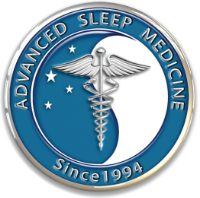
If you've received a new PAP device to treat your sleep apnea in the past 12-18 months, you likely have a device that can be enabled to wireless transmit your usage data to your smartphone, your physician, your medical equipment provider and even your health insurance company.
Why? How? What does this mean for patients and their privacy? What are the benefits for patients and their healthcare providers?
Why does my health insurance company care if I use my device?
Health insurance companies will usually cover a PAP device to treat your sleep apnea if you have proof of your diagnosis from a sleep study; however, more and more insurance companies are paying for those devices on a rental basis rather than paying the full purchase price of the device upfront. The rental term can be anywhere from 2 months to 12 months. After the last rental payment is made, the patient owns the device.
Insurance companies do this because patient adherance to PAP therapy is not very good. PAP therapy is challenging, even though PAP is the most effective treatment for sleep apnea and proper usage is proven to decrease sleepiness, improve daily functioning and restore memory in sleep apnea sufferers. Several studies show that less than 50% of patients prescribed PAP therapy use the device more than four hours per night.
Insurance companies don't want to pay for a PAP device that you aren't using.
How does my insurance company know if I'm using my device?
In response to the insurance companies requirement that you prove you are using your device BEFORE they will pay for it, PAP device manufacturers have developed ways to more easily obtain that data, called "compliance data" or "usage data."
These are the most common ways of obtaining the data:
- Smart card. Each PAP device has a data card, or memory card, located inside of the device that stores your usage data on a rolling basis (usually around 12 months of data). It's a small card like the memory card used in a digital camera. The card can be removed (the data is also stored inside of your device) and sent to your physician or equipment provider to download the data and generate a report. There is no wireless transmission of data, but this does require additional steps such as mailing in the data card or scheduling an appointment with the equipment provider to have the data downloaded.
- Attachable modem. A separate modem can be purchased and attached to a PAP device. It uses cellular service to transmit the data on a regular basis. Modems can be used for short period or for the entire length of therapy. Data is transmitted about an hour after the machine stops being used.
- Wireless-enabled PAP device. The newest devices have built in modems that use Wi-fi, Bluetooth or cellular service (or a combination of them) to transmit your data. Assuming that it has access to a wireless signal, the machine will automatically relay usage data to the patient’s care provider about one hour after the machine stops being used.
What information is being tracked?
Data-capable CPAP machines collect several statistics pertinent to successful CPAP therapy, such as hours the device was used, time spent sleeping, apnea-hypopnea index (AHI), and leak rate. With this information, treatment specialists can monitor a patient’s progress, check his compliance, and prescribe changes in therapy as required. Some devices even allow for remote trouble-shooting like checking to see if the device is working properly and making changes to the pressure settings (by prescription only).
Most insurance compliance guidelines require that you show proof of using your device for a minimum of 4 hours per day at least 22 days out of a consecutive 30 day period within the preceding 90 days (in the past 3 months).
Where does the data go?
It depends on the type of monitoring device and the manufacturer of your device. At the very least, the data is obtained by your equipment provider who is billing your insurance to obtain payment for the device. The report will be sent to your insurance company. The data is securely stored by your provider and you have the right to request your medical records, if desired. Your physician may also wish to see your compliance data in order to better manage your therapy.
How often will I need to show proof of compliance?
This also depends on the requirements of your insurance plan. For several years, many insurance companies, including Medicare, have required proof of usage in order to pay for the on-going rental or purchase of a PAP device.
Proof of compliance for replacement supplies
Recently, insurance companies are also requiring proof of usage on a yearly basis before they will authorize the payment of replacement supplies. Replacement supplies are the additional masks, cushions, filters and tubing that must be replaced at regular intervals to ensure optimal performance of the PAP device. Replacement supplies are usually shipped to you by your equipment provider every 90 days.
Again, insurance companies don't want to pay for equipment you're not using.
Efficient treatment or Too Much Information?
Data-capable CPAP machines could mean more effective, tailored sleep apnea care and a general increase in compliance. It also requires continual monitoring of one of the most private areas of a person’s home. What do you think? Do the advantages outweigh the cost in privacy?
Editor's Note: This post was originally published in September 2014 and has been edited and updated for accuracy and comprehensiveness.





